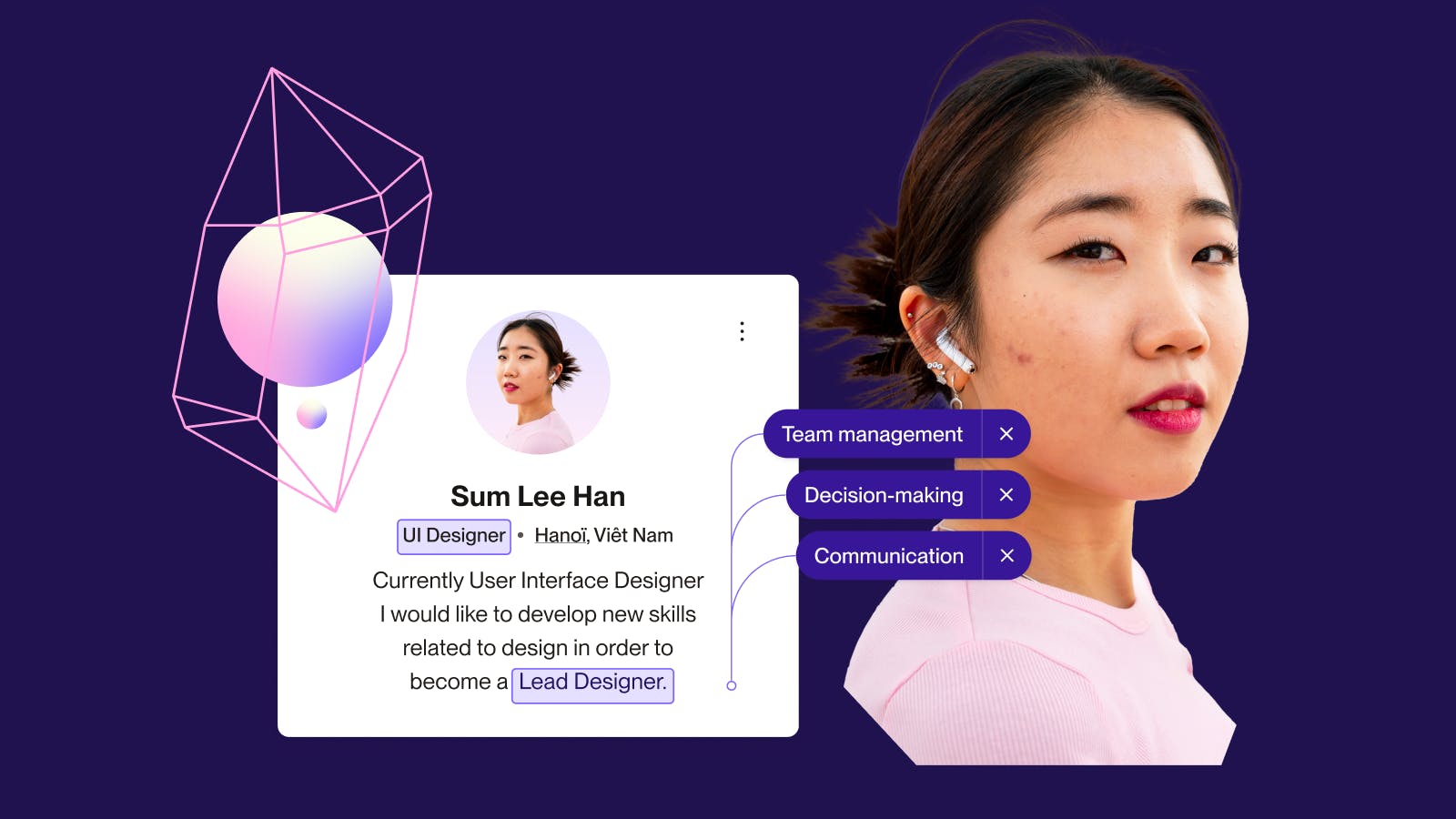Talent Management: building strategies to retain top talent

Today, companies face a critical challenge: retaining their top talent. If your organization is also grappling with this, this article is for you!
The Great Resignation and "quiet quitting" have shifted employee expectations—employees are looking for purpose, personal growth, and work-life balance. Human Resources (HR) teams must adapt to prevent excessive turnover. But how can you effectively retain talent? Why is employee retention essential in today’s job market? Let's build an effective strategy together.
Outline of this guide:
- Definition, Objectives, and Benefits of Talent Management
- Talent Management and Retention: An Essential Strategy
- How to Retain Top Talent: HR Tools and Strategies
Talent Management: Definition, Objectives, and Benefits
What is Talent Management?
Talent management is a strategic process to attract, develop, motivate, and retain an organization's most qualified and talented employees. This approach goes beyond traditional HR functions by focusing on identifying, nurturing, and advancing exceptional talent within the company.
Objectives of Talent Management
The main goal of talent management for HR teams is to ensure that the right people are in the right roles at the right time to meet company objectives. Talent management aims to:
- Identify Top Talent: Spot employees with strong potential and essential skills.
- Develop Skills: Offer training and development opportunities to build employees' skills and knowledge.
- Motivate and Engage: Foster a positive work environment that boosts motivation, engagement, and employee satisfaction.
- Retain Talent: Given that replacing an employee can cost 50-120% of their annual salary, effective retention strategies are essential.
Benefits of Talent Management
1. Competitive Advantage In today’s fast-evolving marketplace, organizations with effective talent management gain a significant competitive edge. Skilled teams enable quick adaptation to market changes, helping companies stay ahead.
2. Increased Productivity Talent is more likely to reach its full potential with proper management and motivation. Effective talent management boosts productivity, enhances work quality, and drives ongoing innovation.
3. Reduced Turnover Investment in employees’ growth and professional development builds loyalty, significantly reducing turnover. With hiring and onboarding costs often reaching up to $10,000, reducing turnover is vital.
4. Strategic Succession Planning Talent management also facilitates proactive succession planning. By identifying and preparing future leaders, organizations can ensure continuity and smooth transitions during leadership changes.
Talent Retention: A critical HR strategy for businesses

Retaining talent is the "final step" in the talent management process. Beyond recruitment and onboarding, it’s about implementing HR initiatives to keep employees engaged—this could include development plans, competitive compensation, and a positive work environment. Employees are a company’s most valuable asset, so they should be central to your talent management strategy.
Without motivated, engaged employees, productivity suffers, business goals aren’t met, and overall company performance declines. According to Microsoft, 41% of employees considered resigning in 2022. HR departments must go the extra mile to retain top talent.
Defining Talent Retention
Talent retention represents an employee's lasting commitment to their employer, minimizing turnover. While previously overlooked, retention has become a priority in the post-pandemic job market. Gallup’s 2022 survey shows that engaged teams are 21% more productive and profitable. Consequently, HR departments are crafting strategies to retain top talent and curb turnover.
The turnover rate, or employee turnover, measures workforce changes over a set period—typically a quarter, semester, or year.
Calculating Turnover
Calculating your company’s turnover rate is straightforward, helping you assess employee attrition and its impact on productivity, performance, and workplace culture. High turnover can be costly, resulting in missed goals, reduced creativity, and communication gaps.

Add to the costs of de-motivation the costs of high turnover, and there's only one thing left to do: HR departments need to build an effective, people-focused talent retention strategy. And to do this, it's vital to be aware of the new challenges and the associated impact.
New talent management challenges
Talent management has evolved into a true challenge for HR teams. With shifting employee expectations, some companies mistakenly believe employees no longer wish to work. However, employees’ relationship with work has merely evolved, and organizations must adapt to stay competitive. Today’s employees seek:
- Meaningful work
- Company values that align with their own
- Work-life balance
- Recognition and trust from leadership
- Career advancement and growth opportunities
- Clear communication and feedback
The current dynamic favors employees, allowing them to expect more from employers. To thrive, companies need to align with these expectations.
Top priorities for employees include: A solid company culture, participatory management style, career development opportunities, and clear paths for growth.
Five key HR levers to retain talent throughout the employee lifecycle
If you’re among the 67% of HR professionals planning to strengthen retention strategies, here’s a checklist for success:
1. Recruitment: setting the foundation for future retention
Retention begins at recruitment. Transparent employer branding attracts candidates who align with your culture and values, improving retention from day one. During recruitment, communicate the benefits of joining your organization (e.g., remote work, training, social responsibility, and career growth) to avoid surprises and boost engagement.
2. Onboarding: essential for engaging new talent
Effective onboarding is key for setting the tone for new hires. To ensure a positive experience, ask yourself: “What could improve my first day?” Provide a personalized onboarding experience to welcome new hires.
Whether remote or in-person, a structured onboarding process, including an introduction to the team and access to necessary tools, sets a solid foundation for engagement. Additionally, don’t overlook “pre-boarding” during the probation period to reinforce commitment. A supportive start establishes long-term engagement.
3. Career advancement: retaining top talent
After a period with the company, high-performing employees often seek advancement. Offering career growth keeps them engaged and committed. Assessing each employee’s skills, needs, and aspirations is essential to providing personalized growth opportunities.
An actionable plan to retain employees can include:
- Leadership training
- Upskilling
- Internal mobility (e.g., role transfers within teams)
- Performance-based salary increases
According to a 2021 CIBC report, 57% of employees aimed to advance within two years. Listening to employee aspirations and personalizing their career path fosters loyalty and growth.

4. Customized mobility paths
At 365Talents, we believe in an internal mobility culture that boosts retention, conserves talent, and reduces recruitment costs. By advancing within the company, employees gain new skills and motivation from fresh challenges.
Before identifying new opportunities, HR teams need insight into employees’ existing skills and potential skill gaps. Thankfully, specialized tools make it easy to match skills with opportunities. 365Talents accelerates mobility with intelligent suggestions, matching top talent to open positions, career paths, and projects in seconds.
5. Change management and employee engagement
Preparing employees and teams for changes, such as role adjustments or return from leave, strengthens engagement. Although on a smaller scale, this type of change management is crucial.
Imagine if a team leader took maternity leave for several months—without guidance, the team might feel lost. Implementing re-engagement plans for employees and managers undergoing changes keeps morale high.
Providing a “re-onboarding” experience allows returning employees to seamlessly reintegrate. Schedule meetings to share updates and clarify goals, fostering positive engagement for the individual and team.
Bonus: Quality of Life and Working Conditions (QLWC)
Finally, focusing on QLWC—an integral part of retention—means assessing factors like work environment, work-life balance, interpersonal relationships, job structure, and recognition. These elements are central to an employee’s journey and contribute significantly to motivation and engagement. At 365Talents, we regularly gather employee feedback to assess work-life quality, providing valuable insights into areas needing improvement.
Effective retention requires consistent effort across multiple areas. Talent retention is crucial for managing talent and for an organization’s success. Every step in an employee’s journey matters, from onboarding to offboarding.
Even if an employee is leaving, a positive departure experience can lead to advocacy or future talent referrals. Retain your talent and become a skills-based organization with 365Talents' powerful solutions. Start building a stronger, more agile and future-ready team today.








Talent retention is an ongoing mission requiring sustained effort across several areas of the employee journey. Talent management is crucial for any organization looking to foster engagement, achieve business goals, and develop a skills-based culture.
365Talents
,
More articles on talent management











